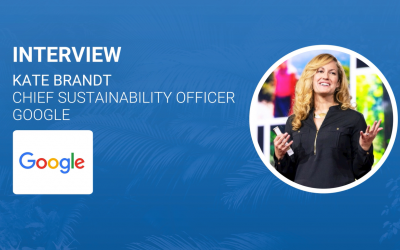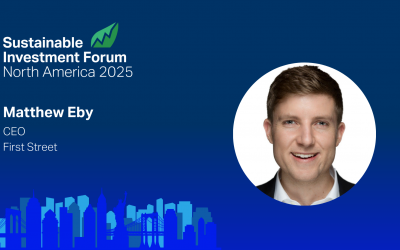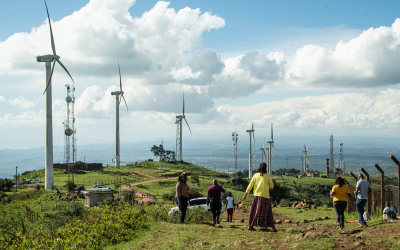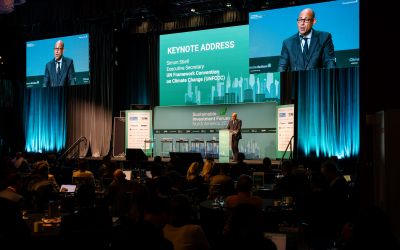Thomas Hohne-Sparborth on System Change Investing and the Future of Sustainable Value Creation
In this Q+A, Thomas Hohne-Sparborth explores how system change investing identifies long-term opportunities by aligning financial strategies with the transition to a net zero, nature-positive, and socially constructive economy.

Thomas Hohne-Sparborth is Head of Sustainability Research and heads up a team of analysts focused on the research around the transition to a Circular, Lean, Inclusive and Clean (CLIC) economy.
He joined LOIM in 2019 as one of the first members of Lombard Odier’s newly-established Sustainability Research team. He now leads a research team that comprises geospatial analysts, economists and data scientists and provides thematic research into sustainability challenges, ranging from climate change to nature-related risks, the circular economy and social inequality. He designed and led the development of Lombard Odier’s proprietary Temperature Alignment methodology, intended to evaluate the alignment of companies and portfolios to the climate transition, which has been recognised as one of the leading metrics in the market. He has also designed the decarbonisation process that lies at the heart of our strategies focused on the transition to Net Zero.
You’ve emphasised ‘system change investing’ as a lens through which to evaluate long-term opportunities. What are the key areas of system change driving the shift to a net zero, nature-positive and socially constructive economy?
This type of investing involves looking at today’s economic systems, understanding where they are breaking down – the pain points – and then identifying the solutions. We want to find businesses that are resilient for the long term.
Take net zero. Pain points stemming from the use of fossil fuels are obvious. Major cities risk becoming unliveable, heatwaves in Europe and India are increasingly disrupting food production – making inflation worse – and wildfires have created an insurance crisis in key parts of the US. The solutions are electrification and a shift to low-carbon energy. By 2050, we expect 50% of final energy to be consumed in the form of electricity, up from 20% today; we expect a global carbon price of about $150/t, and solar, wind and batteries to be the backbone of the global power system1.
Similarly, our entire economic system depends on the natural world – from clean water and fertile soil to pollination, raw materials and climate control. And yet we are losing nature at an unprecedented speed: 6 of 9 planetary boundaries have been crossed, and more than 20% of global land is now degraded. A direct solution is the transition to a bio-based economy. This places a financial value on nature – through instruments like payments for ecosystem services – and rewards regenerative agricultural practices like low-till farming and crop rotation. The shift to leaner industry enabled by new performance materials and automated systems also plays a major role.
Finally, we need to move to a socially constructive economy. The lack of infrastructure to manage aging populations is a huge problem. Healthcare services are buckling under the pressure. Health expenditures have doubled since 1970 and now account for more than 10% of GDP in OECD countries. Pension systems are similarly strained, with huge projected shortfalls in publicly funded programs, stretching above $200 trillion by 2050 in the largest ones2. Other pain points abound, the most obvious being unaffordable housing and overcrowded transport systems. There are a variety of solutions, including a shift from treating disease to preventive medicine, the rise of cost-efficient app-based consumer finance, and the increase in platform solutions for mobility, housing, food and commerce. These models ease affordability constraints and also boost wellbeing.
Systemic pressures – like climate change, health care affordability and digital disruption – are putting current models at risk. How do responses to these pressures become sustainable economic opportunities?
We believe that mounting systemic pressures become catalysts for action at a society and policy level. The perception that the current model is breaking leads people to search for an alternative system. Over time, as the new system improves and the challenges of the old system become ever clearer, a rapid transition can occur.
The inflection generally happens when tipping points around affordability, attractiveness and accessibility are reached – in essence, when the new system starts to outperform the old one. History suggests that once this occurs, technological transitions can be surprisingly fast. Companies at the forefront of the transition can capture market share and benefit from shifting profit pools.
What distinguishes the system change investment approach from traditional ESG investing?
System change investing is a financial conviction. It is a theory for understanding how persistent value is created in markets over time. We use our understanding of system changes to pinpoint companies we believe are well positioned to outperform.
Traditional ESG investing is different. It focuses on whether companies are ‘good corporate citizens’ with the right social and environmental policies. It often means adding filters or exclusions to an investment process.
This lens can sometimes point in different directions than system change investing. For instance, a Chinese EV maker may have poor disclosure on labour practices, leading to a low ESG score, but simultaneously be well positioned to capture financial upside in the transition to electric mobility.
To be clear, we also factor the ESG (or ‘alignment’) dimension into our investment process. This is about ensuring that we allocate capital in a responsible way, in line with our values and the expectations of our clients.
How can system change analysis help investors identify undervalued companies positioned for long-term growth and resilience in a rapidly evolving economic and environmental landscape?
We believe that system change analysis can help to deliver superior returns. Investors typically have short time horizons and linearly extrapolate past patterns when modelling stock returns. This can cause them to miss the exponential growth and dislocation of profit pools that can occur once a new technology becomes viable.
Our conviction is that by taking a longer-term, system-focused view, we can identify mispriced companies whose opportunities outweigh the threats. We believe this gives us a higher chance of building portfolios of names that sustain high performance and deliver resilient multiples.
In your view, what sectors or technologies are currently the most underestimated in terms of their potential to thrive through the climate and sustainability transition?
The intersection of digitalisation and the sustainability transition continues to be misunderstood by the market. Commentary on AI often overlooks the possibilities it offers for energy efficiency. In some cases, CO2 emissions per tonne of product have been cut by 30% or more through the integration of real-time energy monitoring, the use of sensors and AI-driven process optimisation3.
On power grids, a recent report highlighted how AI could help double use across transmission networks, through a more targeted and intelligent scheduling of power loads and by diverting excess power to EVs, batteries and thermal storage4. This could save as much as $100 billion per year in capital spending globally, while enabling faster and smoother connection of renewables to the grid.
A similar pattern is playing out in the social realm. The proportion of the global adult population without a bank account has more than halved since 2010, from 50% to less than 25% as of the latest data5. The primary enabler here is new app-based e-money accounts, which are far more affordable and accessible for people in developing countries.
Technology, data and AI actually run through the sustainability transition – we describe it as the digital spine.
On the flip side, system change also means disruption. Where do you see the biggest risks, or blind spots, for investors who are not adequately considering structural economic shifts? Which business models are most at risk?
We see the biggest blind spots in the transition to a nature positive and socially constructive economy.
In healthcare, we believe there could be a significant shift in where value is created – away from facilities and drugs aimed at treating symptoms and end-of-life care, and towards companies promoting early intervention measures. The rise of obesity drugs is the most notable disruptor here, but also the growth in wearables, tracking devices, and sophisticated diagnostic equipment that let therapies be given at an earlier stage, reducing overall costs.
In financial services, the shift towards digital-first institutions with lower costs is challenging the business models of bricks-and-mortar businesses. The potential for significant valuation write-offs and loss of market share is not yet widely recognised.
Finally, we expect policy action to zero in on today’s food system as a driver of nature destruction and social exclusion. We expect it to target foods high in fat, salt and sugar, and to promote alternative sources of protein. We believe that many of the large consumer brands on the wrong side of this transition will lose market share and face more regulatory restrictions.
The intersection of sustainability and data analytics is becoming increasingly important. How does your team leverage geospatial data to determine whether a company qualifies as a sustainable investment?
We integrate geospatial and economic data in our sustainable investment framework to increase the accuracy and credibility of our assessments. Geospatial analysis plays a critical role in our Do No Significant Harm (DNSH) component, which evaluates a company’s environmental impacts.
We overlay company location data with high-resolution global datasets, such as maps of protected areas, key biodiversity areas and regions facing water scarcity. We can then assess environmental impact at the company level and also at the asset level, where impacts and risks are often hidden from company averages.
For example, identifying the percentage of operations located in water stress areas or adjacent to protected areas not only enables us to determine whether a company meets the criteria for sustainable investment. It also guides our engagement strategy—prompting discussions with companies about their risk-management practices.
One area we have been particularly focused on in recent years is deforestation. We have developed a dedicated tool that provides both quantitative and qualitative insights on deforestation risk materiality and management. This includes, in addition to geospatial insights, an evaluation of a company’s deforestation and biodiversity loss policies, and its management of related controversies.
Are there any other applications to leverage these tools to drive investment insights?
Geospatial analysis not only shapes our sustainable investment approach, but also helps us explore how sustainability impacts financial performance. This includes exploring critical questions like the financial impact of physical climate risks and how the productivity of specific company sites relates to their environmental footprint.
For example, a recent exercise involved comparing copper mining operations of companies with similar valuations6 that were all classified as ‘sustainable investments’. We examined operational productivity indicators alongside environmental impact metrics, such as water usage, energy consumption and waste generation.
This allowed us to identify the companies with the highest-quality assets from both operational and environmental perspectives, and to determine which were better positioned in terms of resilience to environmental constraints and regulatory pressures. The result was a more nuanced and forward-looking view of long-term value creation.
1 LOIM modelling. The carbon price cited means that $150 is charged for every metric ton of carbon dioxide (CO₂) emitted.
2 We’ll Live to 100 – How Can We Afford It? | World Economic Forum
3 WEF_Global_Lighthouse_Network_2025.pdf
4 Wicked smart: what if AI re-shaped the power grid? - Thunder Said Energy
5 The Global Findex Database 2021
6 As measured by price-to-earnings (P/E) ratios





